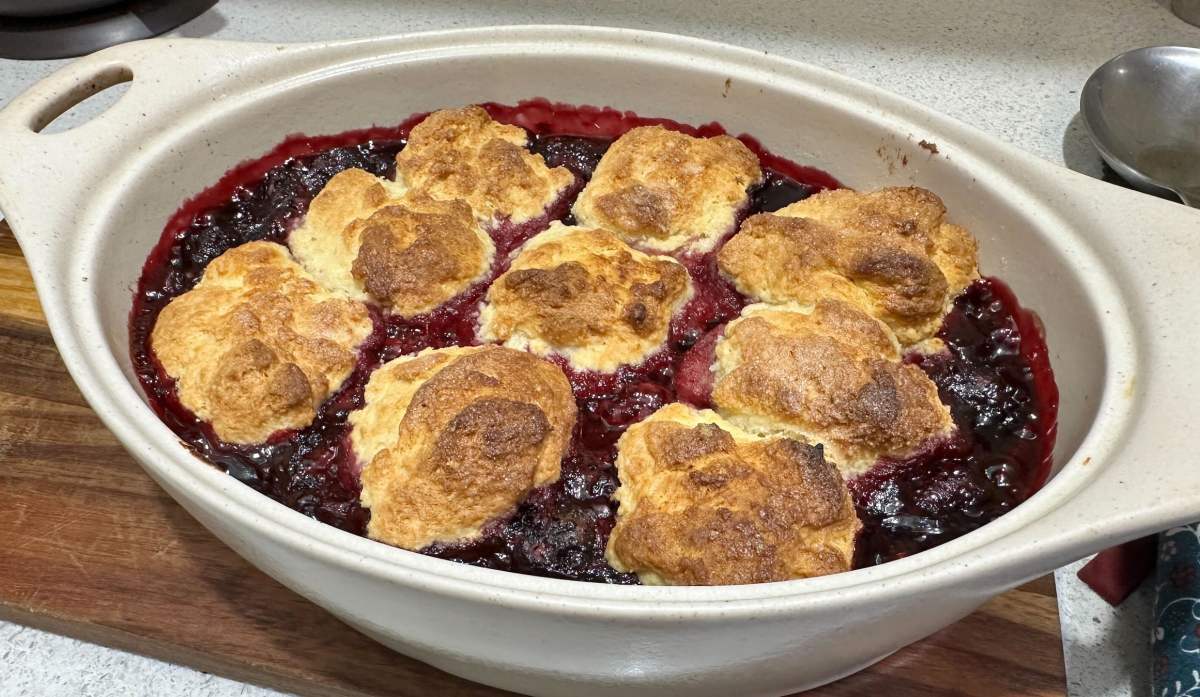The Official Stardew Valley Cookbook is fast becoming my favourite “gamer” recipe book, particularly as the weather in Australia gets colder. It’s a cookbook filled with hearty, wholesome treats designed to be served steamy – some with a spot of ice cream – to keep you warm, full, and feeling cosy. In that way, it’s a lot like the game which inspired it.
In Stardew Valley, cosiness is essentially your only goal. Sure, you spend some time in the game wandering through dungeons, fighting monsters, and discovering eldritch secrets, but at its heart, Stardew Valley is about creating a wholesome life – farming, fishing, and cooking in a peaceful and protected realm.
By design, the game’s cookbook replicates this feeling well, with recipe choices and overall design (you get little illustrations and characters talking in the margins) making the cookbook a worthy and wonderful little companion. As an added bonus, it’s also liable to nab you compliments – every recipe I’ve tried has been a smash hit.
Read: 8 strange unsolved mysteries in Stardew Valley
In that regard, The Official Stardew Valley Cookbook put me in a very funny position, where I’ve had to guard the recipes like secrets. I was sent a copy of the book by its publisher, Random House Worlds, under strict embargo – but I needed taste testers for my recipes. I wound up vaguely promising recipes to a lot of people, at some point in the distant future, which wasn’t really helpful. But it goes to show how popular the dishes were.
Based on my tastes, I picked two recipes from the book to create: Eggplant Parmesan, and Blackberry Cobbler. I had some criteria I was working within: one meal, one desert, no seafood (I’m allergic, and there’s quite a few seafood recipes in the book). I also wanted warm food for the colder weather, and dishes had to be appealing to my family, as well. So far, my hit rate is two-for-two, as both recipes created rich, warm dishes enjoyed by everyone.
The first recipe I tried was the Blackberry Cobbler, which proved to be a great start.
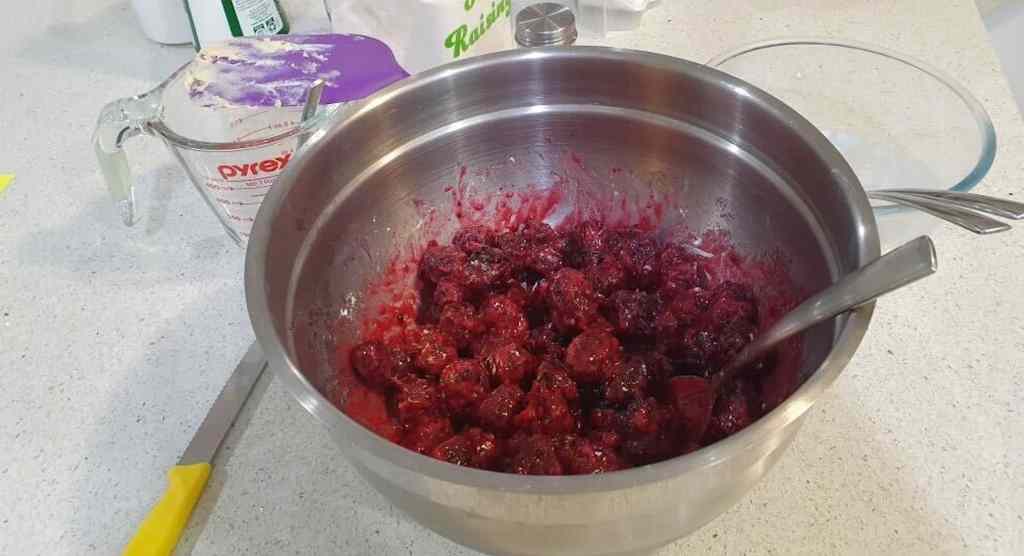
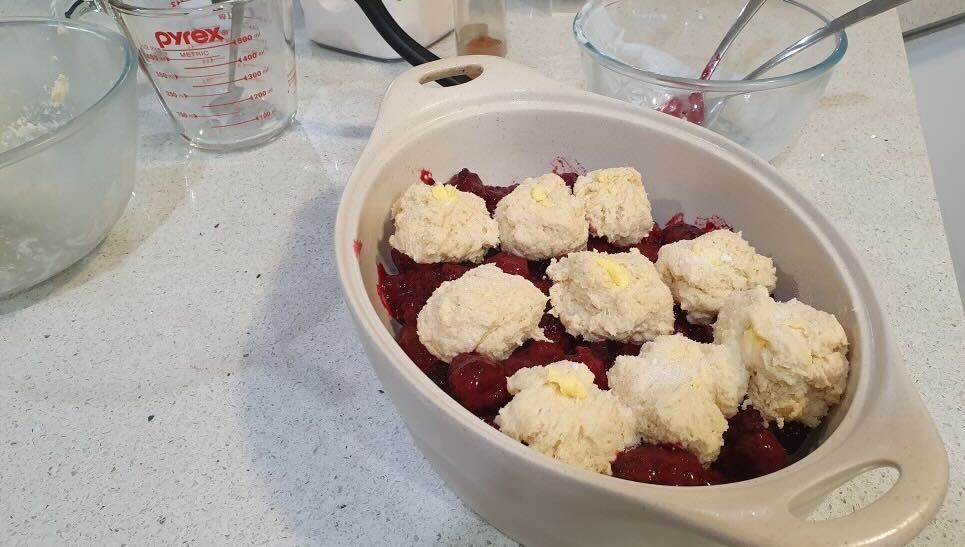
While the cookbook has been penned in the United States, and therefore has some imperial measurements that need to be converted, it’s still globally accessible. Every ingredient in this recipe was sold in Australia – which isn’t always the case with international cookbooks – and on these particular pages, imperial / temperature conversions were provided side-by-side.
The second most important thing about the recipe was that it was superbly easy to follow, with simple sentences to break up each individual action. While there aren’t “steps” per se, the text is formatted simply, so you can understand your directive at a glance.
Without revealing the entire secrets of this recipe, it essentially involved two bowls – one to mix a dough of flour, sugar, cinnamon, salt, buttermilk and vanilla, and another to combine the blackberry sauce, which involves blackberries, blackberry jam, sugar, salt, and cornstarch.
Then, you get to the fun part – oozing the blackberry mixture into a baking dish, scooping up the dough, blobbing it into tiny balls, and plopping it into the mixture. A cobbler, as I’ve learned, is basically an inside-out pie where the mixture infuses the dough.
After 50 minutes in the oven, the cobbler came out warm and steaming. A few moments later, it was in my bowl with ice cream, much to my delight. While packed with sugar, the cobbler is balanced by the slight tang of blackberries, making it just the right amount of sweet. With the added ice cream, you’ve got a hearty desert, and one perfect for sharing with friends. Not to toot my own horn, but the cobbler got rave reviews, and I’m set to make it all again very shortly.
The next dish I tried was the Eggplant Parmesan, which was slightly more complex than the cobbler – but even more satisfying. This recipe wasn’t as easy to comprehend as the Blackberry Cobbler, and didn’t convert imperial/temperature measurements, but given the end result was so layered and rich, I can’t begrudge it too much.
One note on this recipe: it does ask you to make your own (non-seafood) marinara sauce, but to lower the cost of ingredients, I ended up using a trusty ready-made passata sauce, which I think worked out just as well.
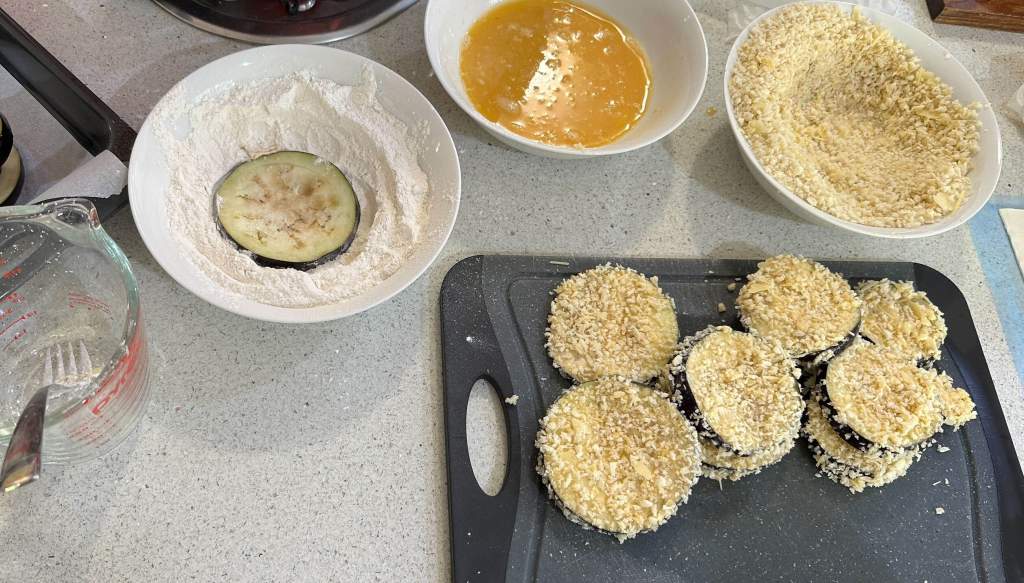
As described in meaty paragraphs, this recipe is basically two meals in one: first, you schnitzel eggplant slices in flour, egg, and breadcrumb mixtures (with some added herbs and spices) and fry it, and then you layer these pieces like a lasagne. You put some marinara (or in this case, passata) sauce down the bottom, then the eggplant slices, then a cream cheese mixture, then mozzarella, and repeat the process until you have a baking dish stacked with cheesy, creamy, saucy eggplant goodness.
Stick it in the oven for about 30 minutes, and you’ve got a real winner on your hands. I will say this recipe got me into trouble, because I brought it to a large family and friends gathering (it feeds 8-12 people). After everyone dug in, I had casual acquaintances and strangers coming up to me asking for the recipe. And there I was, politely trying to explain that I actually couldn’t share it, and I was super sorry.
But I can definitely see this Eggplant Parmesan becoming a regular feature in extended family parties, now that embargo for the recipe is over. Just look at it:
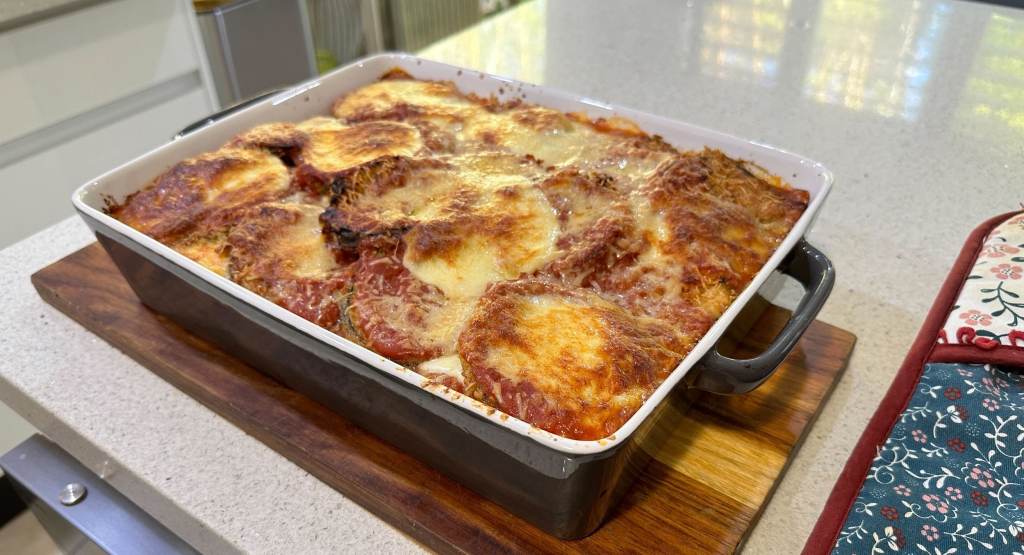
Days later, and I’m still thinking about how delicious the eggplant was, and the way the cheese complimented the sauce. It’s a star recipe, and absolutely worth the effort.
With these two recipes in the books, I’m certainly going to attempt more. So far, cooking from The Official Stardew Valley Cookbook has earned me high praise and new acquaintances, with everyone brought together over the dishes. That’s what good food does, really.
It’s about sharing a meal, and bringing everyone closer together.
There are many mountains left to climb in my experiences with the Stardew Valley Cookbook, but I couldn’t be more excited to start the journey. There are some recipes in the book I can’t touch – the Void Bun, for example, is actually a lobster dish – but I have my eye on so many other recipes, from Pumpkin Soup to Survival Burger, to Banana Pudding, Mango Sticky Rice, and beyond. This is a great cookbook, and it’ll certainly serve fans of Stardew Valley well.
